Quick and Easy Science Fair Projects for 5th Graders
Hands-on experiments. They're one of the greatest tool tips at a teacher or parent's fingertips to ensure that their students understand new concepts. But where do you start with these? How do you know which experiments are the best for your 5th-graders, or which ones will help to promote learning in the most stimulating way? Well, look no further. This list of 30 5th-grade science projects compiles the best activities for encouraging your students' discovery and passion for science, from biology, physics, chemistry, and more.
1. Bouncing on a trampoline
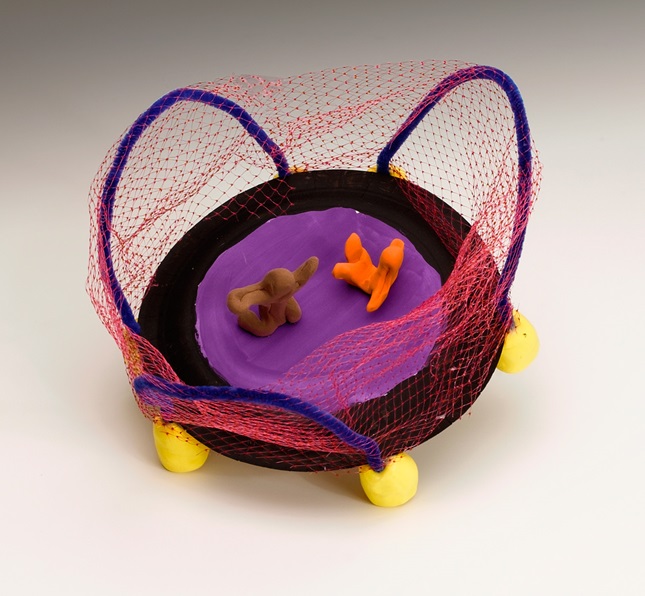
Get your kids learning while exercising! This mini trampoline experiment will help your 5th graders by challenging their construction skills and understand the basic principles of a rubber band. By adjusting their own contraption, they will discover how to make the highest bounce.
Learn more: Teach Student Savvy
2. The "magic" leakproof bag

Challenge your students to create a leakproof bag. They might think it's magic, but you can use it to teach them all about the science of polymers. You can even develop on this by using other materials, too, like plastic bags that have a different size or thickness. Definitely one for your messier kids!
Learn more: Steve Spangler Science
3. Clothespin and popsicle stick airplanes

For this engineering activity, your student will need to create all sorts of airplanes using different household items, such as popsicle sticks and clothespins. Using different methods and construction material, they will see if their planes can actually fly! This experiment also has excellent links to STEAM, too.
Learn more: STEAMsational
4. Tornado in a Bottle

Bring the outside world inside with this fun and simple science experiment. You'll only need a few things, like a bottle, water, and glitter, to help your students to understand the science behind natural disasters like a hurricane. You can even develop this to teach them about centripetal force as well.
Learn more: Cool Science Experiments Headquarters
5. Float or Sink Pop Cans

Your students might already be familiar with the version of this experiment that uses eggs, so why not shake things up with soda cans instead? This experiment is a great way for your students to learn about density with different types of artificial sweeteners. You can also teach them about the dangers of too much sugar!
Learn more: Cool Science Experiments Headquarters
6. Invisible Ink

Your students will love transforming into secret agents with this amazing activity! Using baking soda as ink, they'll turn their writing invisible. You can then reveal the message with grape juice or a heat source to teach them about paper fibers.
Learn more: ThoughtCo
7. D.I.Y. Snowflakes

All of the fun of snow, but with none of the mess and cold! This is a perfect way to teach your students about molecules and the separation of liquids in a way that they'll find interesting. You can also use these as beautiful decorations all year round.
Learn more: Little Bins for Little Hands
8. Quicksand escape

Have you ever seen your students playing superhero games together? Well, this is your chance to turn those games into learning! This experiment scaffold kids' learning of solid and liquid properties by learning through play. They will also discover the best ways to escape from this tricky texture!
Learn more: Education.com
9. Solar S'mores

Create a solar oven that traps the Sun's energy in this delicious science experiment. Your students are to enjoy these tasty treats while they learn about alternative energy resources and greenhouse gases.
Learn more: Desert Chica and Climate Kids NASA
10. Monster Dry Ice Bubble

This experiment does require a little preparation, but it's sure to be a hit with your students. They will explore the process of sublimation and learn about pressure as they watch the bubbles expand. As this involves dry ice, you will need to be careful with it.
Learn more: Wonder How To
11. Soil Erosion Experiment

This is a great activity to do outdoors on a nice day, as your students will find out about soil erosion and its harmful effects on the natural world. They'll discover the importance of having vegetation cover the soil.
Learn more: Life Is A Garden
12. Newspaper STEM Challenge

Put those old newspapers to use in this innovative experiment that will foster the creative engineering skills of your kids. They will not only build up their teamwork skills but also develop their problem-solving capabilities by creating their own constructions using only paper materials. This makes it an excellent tool for introducing STEAM engineering concepts.
Learn more: STEM Activities for Kids
13. Create a Bouncy Ball

Polymers are a hard concept for students to wrap their heads around, so you'll want to keep the borax aside for this fun learning experiment. You'll only need a few other spare ingredients to help create your own bouncy balls for your students. They can even play with them afterward!
Learn more: Babble Dabble Do
14. Build a Snack Machine

Yet another delicious experiment, this one involves learning and applying everything they know about simple machines to create their own Mimi snack machine. It only requires a little basic mechanical engineering but it can be a little challenging trying to re-allocate the snacks.
Learn more: Left Brain Craft Brain
15. Hot and Cold Density

If you're looking for a quick science experiment, check out this rainbow density jar experiment. In less than 10 minutes, your kids will explore challenging concepts like water density, molecule science, and more. Try using food coloring for even better results!
Learn more: STEAMsational
16. Build a Bridge

Challenge your students to re-construct their own models of famous bridges around the world to see which one is the strongest. You should encourage your students to make predictions about each bridge's strongest design and weight limitations before testing.
Learn more: Education
17. Testing Heat Capacity
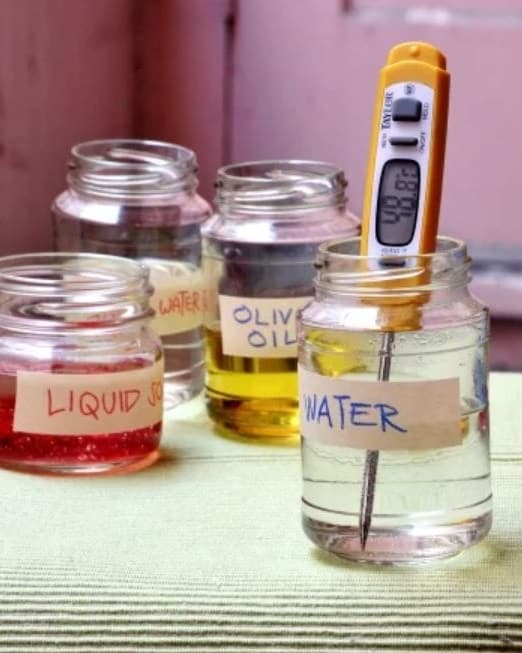
This heat capacity experiment will answer any questions that your students have about why water takes so long to boil in comparison to oil. Your 5th-graders will also understand the different ways that liquids absorb heat and the amount of heat required to modify the object's temperature by a certain amount (heat capacity).
Learn more: Education
18. Rock Candy
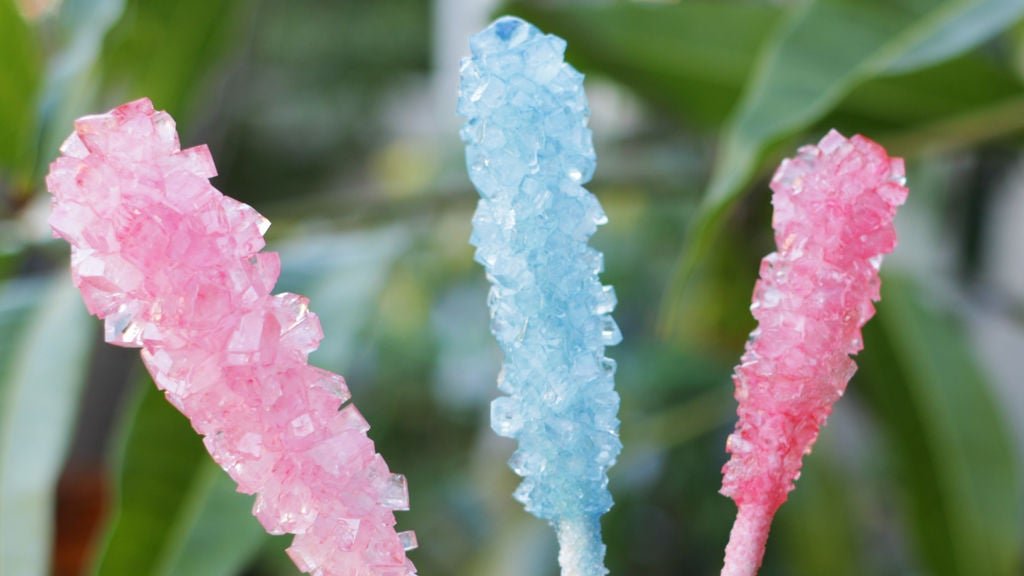
The tasty experiments continue with this rock candy creation. You can use it to show your kids the shape of sugar on a bigger scale. They will need your help with mixing boiling water, but they'll definitely be able to enjoy the sweet results!
Learn more: Steve Spangler Science
19. Sunlight vs. Artificial Light

Your students will learn about photosynthesis and the factors that can affect it in this science experiment. They will investigate whether plants grow better under natural sunlight or artificial light, as well as the plants' general health, too.
Learn more: Education
20. Make a Compass

This excellent experiment is a great introduction to ideas about magnetism and the Earth's magnetic field. Your students will make their own compass with a magnetized needle. Try challenging your students to compare the differences between magnetic north and geographic north.
Learn more: Education
21. Musical Glasses

Make some cross-curricular connections with this charming project. Using basic knowledge of physics, your students will create their own musical glasses of water. By studying the different types of material used, they can explore the various properties of glass with these musical masterpieces.
Learn more: Education
22. Melting Ice Challenge

By adding different solids to ice cubes, your students will test what ingredients can be used to make ice melt faster. They can then record these to determine the melting time of each material. You'll only need a few ingredients, such as salt, sugar, or baking soda.
Learn more: Little Bins Little Hands
23. Exploring Fluorescence

This experiment will help your students to solve the mystery of "black lights" in an interesting way. It will also introduce them to the power of ultraviolet light and the electromagnetic spectrum, as well as the different ways that black light can be used.
Learn more: Supply me
24. Flying Popsicle Sticks

Definitely one for your more active students! They'll simply love learning about potential by weaving popsicle sticks together, then discovering kinetic energy when they throw them. You can challenge them further to see how long of a chain they can make.
Learn more: Steve Spangler Science
25. Chalkboard Slime

Almost all 5th-graders love playing with slime, and this experiment is sure to be no different. By adding a few extra ingredients to a normal slime recipe, they'll create their own slime that is thicker than ever before. An unmissable tool for learning about polymers.
Learn more: Babble Dabble Do
26. Water Conductivity

This is a simple experiment, but it is certainly effective! Your 5th-graders will finally be able to understand the dangers of touching electrical sockets with wet hands. They'll learn about conductivity and whether water really works as a conductor or not.
Learn more: Rookie Parenting
27. Magic Marker Stick Man
Your students will think this marker stick man is magical when it comes to life! Instead, you can use this viral experiment to explain the solubility of materials and the use of adhesives.
Learn more: Gizmodo
28. Making Lightning
A science experience that allows you to bend electricity to your will, even bring it … into the classroom? Dim the lights and bring on a foil-covered fork to find out how static electricity is created.
Learn more: Education.com
29. Watching the heartbeat with marshmallows

Mix this delicious treat with science to help your students learn about the circulatory system. They'll see how the marshmallows "jump" with their heartbeats and understand even one of the hardest units on the human body.
Learn more: Growing Grade by Grade
30. Water Filtration

Demonstrate the water purification process as part of this engaging experiment. Your 5th-graders will explore ideas about water pollution and how to remedy it. You can try expanding on this by using different materials like oils and food coloring to see what happens.
Learn more: Teach Beside Me
31. Make Oxygen with the help of a plant

A plant's ability to make oxygen is the main reason that we are alive today. Ene still, this is a difficult concept for students to understand. This project will help you teach how plants help us by producing oxygen. Try different plants to see which ones are best at producing the air we breathe.
Learn more: MEL Science
32. Pendulum Painting
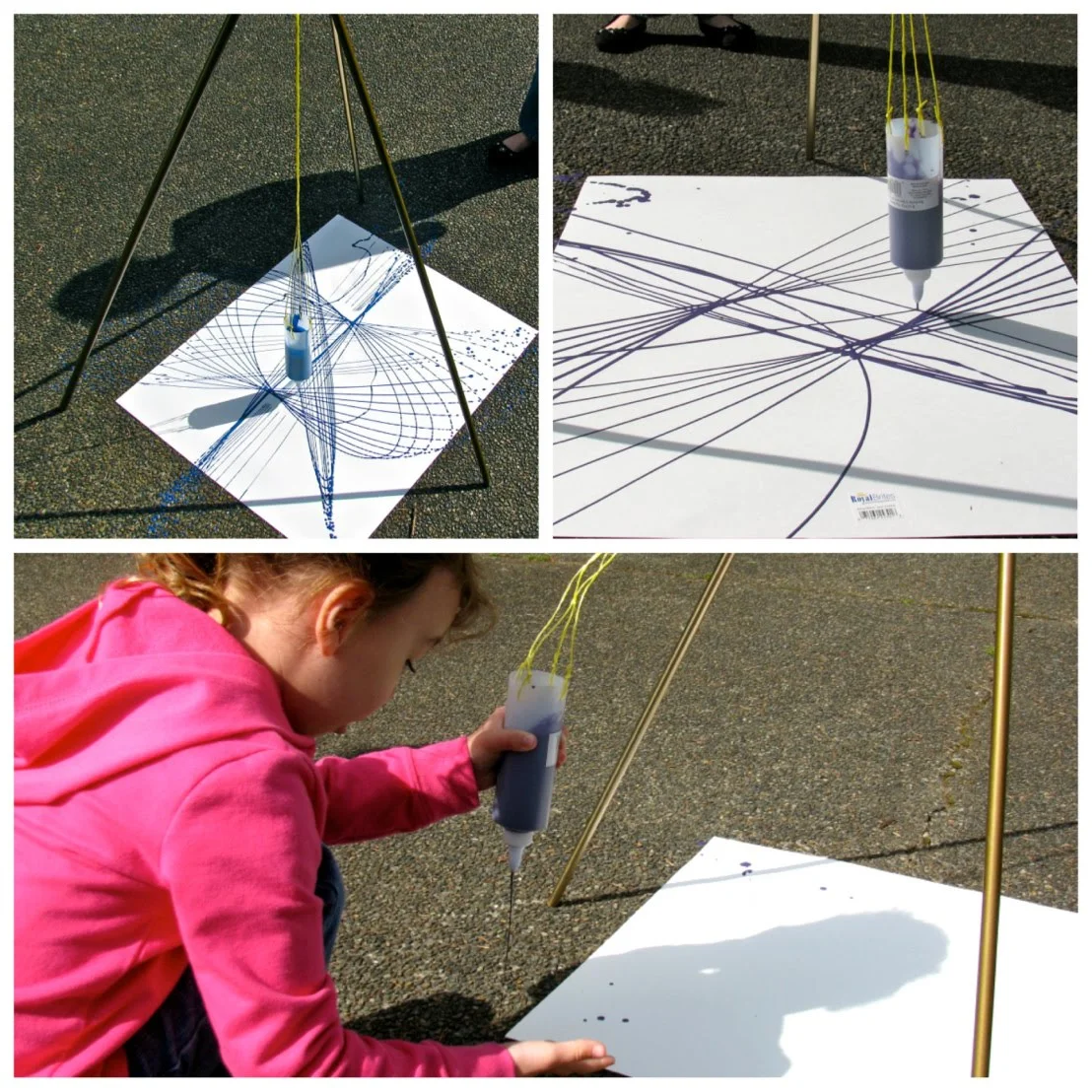
This hands-on activity will help your students learn about important science concepts of potential and kinetic energy while making beautiful art they can be proud of.
Get painting at Jenny Rambles WordPress
33. Greenhouse Gases Experiment

Learn about how greenhouse gases affect the temperature of the planet by using baking soda and lights. You create a chemical reaction using baking soda and water to understand the effects of carbon dioxide on the atmosphere. Have fun!
Learn more: Da Vinci TV
34. Cabbage Chemistry Acid-Base Science Project

A great chemistry science fair experiment that will help your students learn about how acids, neutrals, and bases work. You will make a red cabbage acidity indicator. It's a smelly but engaging experiment, so plug your nostrils and get to testing acidity.
Learn more: Steve Spangler Science
35. Acid Rain Earth Science Effects

Acid rain is a big problem! It is created when we burn fuels to make electricity and has devastating effects on the areas where it falls. This project will teach Earth science principles by checking how acid rain affects chalk at different levels of acidity. Kids will love this!
Learn more: Kids-Earth-Science
36. Tooth Decay Model and Exploration

Teach your students the importance of oral health by demonstrating how tooth decay affects our teeth using our favorite body learning science experiment. You don't need your teeth because you will use eggshells.
Learn more: sciencing.com
37. Do Paper Clips Float?
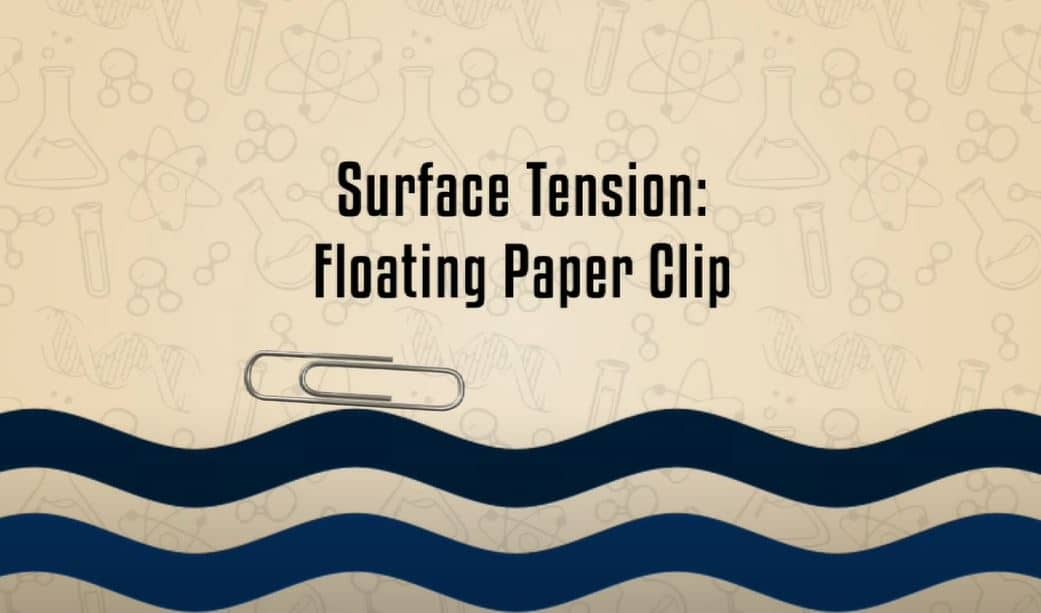
This is a simple experiment to help your students understand surface tension. This is done with household products that you probably have lying around. You can substitute a paper clip for other items to see if they float and how surface tension affects the float-ability of objects.
Learn more: Champak World
38. Make a Heart with Pumping Blood Model

Many people think that engineering projects are only good for earth sciences, but they work great for life sciences too. Your students will build a model of the circulatory system and test how it works in this hands-on project.
Learn more: Exploratorium Teacher Institute
39. Electroscope Static Electricity
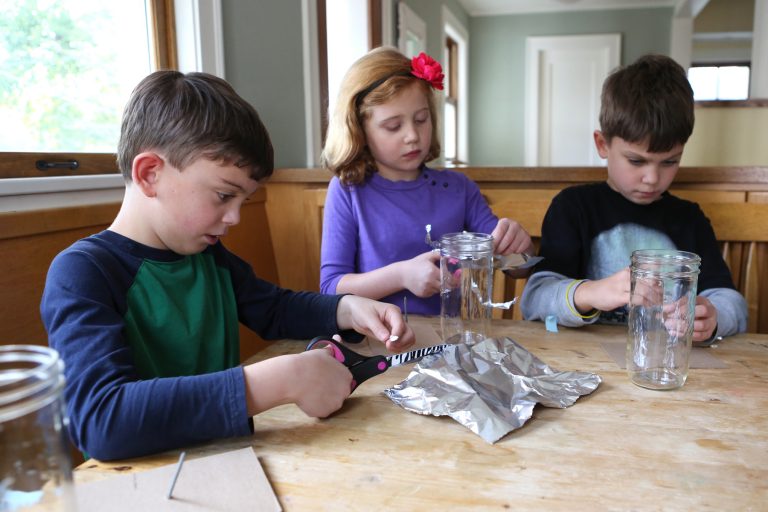
Built-up static electricity has given us all a shock once or again. This project aims to teach your students about how static electricity gathers and then shocks us. It can also teach about the best electrical conductors if you use various materials.
Learn more: The Kitchen Pantry Scientist
40. Apple Oxidation Experimentation
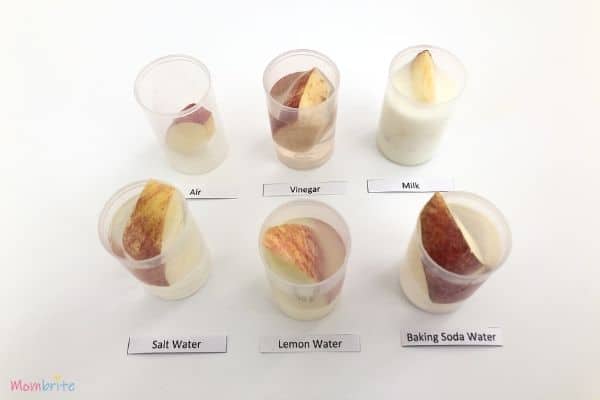
This is an engaging hands-on activity to get your students to understand the process of oxidization that takes place on objects left exposed to rain and water. We recommend using a variety of artificial sweeteners to test out how they affect the process.
Learn more: mombrite.com
41. Explore Density with a Lava Lamp
Acids and bases are a basic scientific concept and there is no better way to demonstrate them than with a groovy homemade lava lamp. Here you can also demonstrate the density of different liquids.
Learn more: Biogen
42. Convection Currents in a Glass
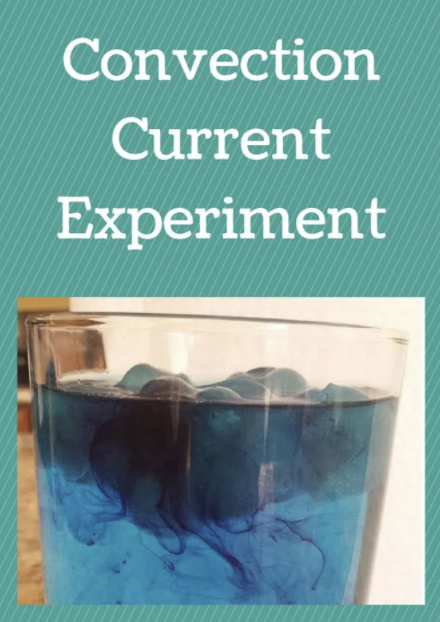
By using water of different temperatures, students can observe convection currents when they drop food coloring in. This can be tied to ocean currents or currents in any large bodies of water.
Learn more: The Home School Scientist
43. Biospheres

Students must create one or several biospheres, each enclosed to show how they are all different. They must explain how the parts of each biosphere are interconnected and how it would be affected if one is removed.
Learn More: Laney-Lee
44. Discover Genetics

Students must collect basic information about their family's characteristics on a gene table. This table must then be interpreted in a family tree to show how some traits can be inherited.
Learn more: Science Buddies
45. Digestive demonstration

With simple kitchen items, students can observe how bile from the liver breaks down fat in the digestive tract. Biological science is a fascinating world the students love exploring.
Learn more: Simple Southern
46. Archimedes' Screw
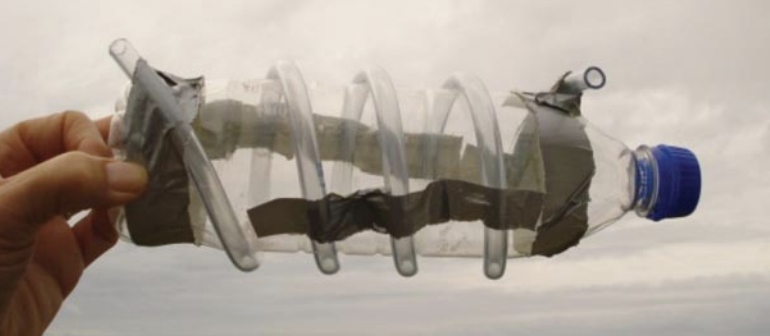
This ancient invention is something students can make themselves, showing how a simple invention can change lives.
Learn more: Steps Engineers Ireland
47. Bottle Rocket Competition
Bottle rockets are an exhilarating way for students to explore aerodynamics and the laws of motion. They can change many aspects of their rockets to see who can fly higher or stay in the air longer.
Learn more: Teaching Engineering
48. Catapult Launches

Students can build their own catapults from popsicle sticks and try and catch the launches or aim them at a target. They must make conclusions about how shorter or longer arms on their design will change the outcomes.
Learn More: Little Bins for Little Hands
49. Candle Carousel
This experiment lets students prove that hot air rises when they see the pinwheel at the top turning. More candles will also make it spin faster.
Learn more: School Science Experiments
50. Water Balloon Density

Fill balloons with various liquids and have students predict which ones will float. They must explore the properties of each liquid that helps them to come to their conclusion.
Learn more: 123homeschool4me
Science and STEM learning is best when it's hands-on, and each of these experiments is a great example of this. Don't forget to encourage your students to complete a write-up activity before and after each one to really push their scientific understanding.
Frequently Asked Questions
What is a good science project for a 5th grader?
A good science project should introduce students to new concepts, but with hands-on and exciting experiments. Take a look at the list above for the most exciting.
What are some easy experiments?
Each of the experiments that we have listed above requires very little setup and is easy to do in the classroom or at home. Plus, they all have proven results that will get your students interested in learning science, too!
Source: https://www.teachingexpertise.com/classroom-ideas/5th-grade-science-project/
0 Response to "Quick and Easy Science Fair Projects for 5th Graders"
Post a Comment